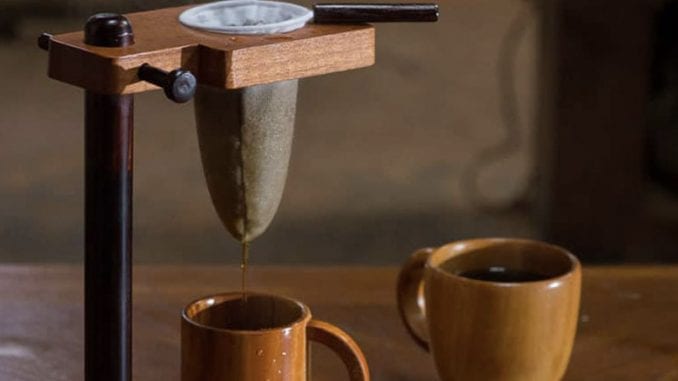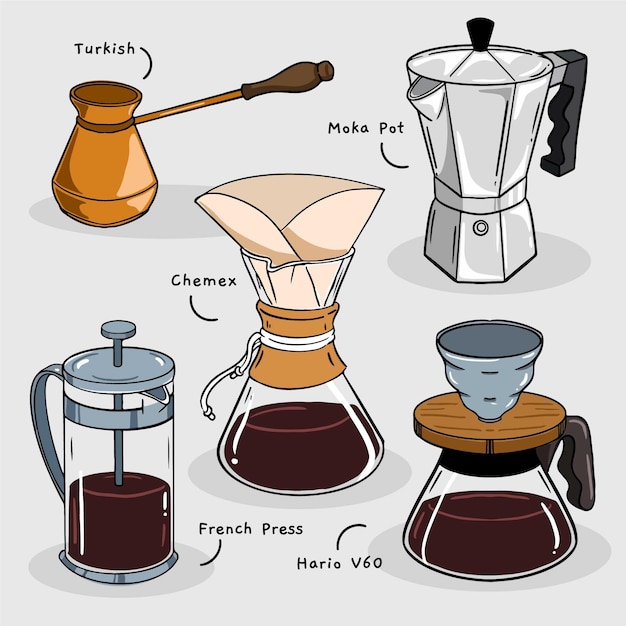The Scientific Research Behind Coffee Brewing: Just How Temperature and Time Affect Your Beverage
Understanding the science behind coffee brewing exposes that temperature level and time are not plain variables yet pivotal elements that determine the drink's taste account and total quality. As we explore the subtleties of these components, the concern occurs: how can one successfully equilibrium temperature and time to attain that ideal brew?
The Chemistry of Coffee Extraction
The chemistry of coffee removal explores the intricate procedures that change raw coffee beans right into the aromatic drink enjoyed worldwide. This transformation mainly includes the solubility of different substances existing in the beans, which are influenced by variables such as grind size, water quality, and the brewing method used.
Throughout the developing process, warm water functions as a solvent, removing soluble compounds, including high levels of caffeine, lipids, sugars, and acids, from the coffee grounds. Each compound adds to the taste profile, scent, and body of the final drink. Acids are responsible for bright and tangy notes, while oils add to an abundant mouthfeel.
The preliminary stages of developing essence acids and sugars, leading to a pleasant level of acidity, while long term extraction can lead to resentment due to over-extraction of unfavorable compounds. Recognizing these chemical interactions is important for optimizing brewing methods, as the equilibrium in between extraction time and water temperature can significantly influence the overall top quality of the coffee.
Ideal Brewing Temperatures
Discovering the right developing temperature level is important for opening the complete possibility of coffee flavors and fragrances - coffee brewing methods. Research suggests that the optimal variety for brewing coffee exists in between 195 ° F to 205 ° F(90 ° C to 96 ° C) Within this range, the extraction process successfully dissolves the desirable soluble substances in coffee beans, resulting in a well balanced and delicious cup
Brewing at lower temperature levels, such as listed below 195 ° F(90 ° C ), might result in under-extraction, yielding a weak and acidic brew with low-key flavors. Conversely, brewing at temperature levels exceeding 205 ° F(96 ° C) can bring about over-extraction, creating a harsh and bitter preference as a result of the excessive dissolution of undesirable compounds, such as tannins.
In addition, the suitable developing temperature level can vary depending upon the coffee bean type and roast level. Lighter roasts usually benefit from a little higher temperature levels to enhance their complex flavor profiles, while darker roasts might be much better fit to lower temperatures to minimize bitterness.
Eventually, maintaining accuracy in brewing temperatures is vital for accomplishing an unified balance of flavors, making certain that every cup of coffee supplies an enjoyable sensory experience.
Influence of Developing Time
Developing time plays an essential role in identifying the taste profile and total quality of coffee. The removal procedure, which influences the taste, fragrance, and body of the beverage, is mainly based on for how long the coffee grounds touch with water. Shorter developing times can lead to under-extraction, bring about a sour or weak taste, as inadequate soluble substances are dissolved. Conversely, extended developing can lead to over-extraction, where unfavorable substances are released, resulting in an astringent or bitter preference.
Optimum developing time differs relying on the method used and the work size of the coffee. A French press generally calls for regarding 4 minutes, while coffee removal is usually finished within 25 to 30 seconds. It is vital to adjust developing time in conjunction with other variables, such as water temperature level and coffee-to-water ratio, to accomplish the preferred taste account.
Comprehending the influence of brewing time enables coffee fanatics to refine their developing techniques, eventually enhancing the sensory experience of their mug (coffee brewing methods). With cautious focus to this variable, one can unlock the complete possibility of the coffee, revealing its distinct qualities and subtleties
Brewing Approaches and Their Impacts

For circumstances, methods like French press and cold mixture enable a longer steeping time, resulting in a fuller body and robust flavor as a result of increased removal of oils and soluble solids. On the other hand, coffee developing uses high stress and a much shorter extraction time, creating a focused shot that emphasizes extreme tastes and an abundant crema.
Pour-over strategies, such as Chemex or V60, provide an even more controlled removal procedure, permitting the brewer to manipulate flow price and water circulation, which can boost illumination and clarity. Percolation approaches cycle water via the coffee premises numerous times, leading to a more powerful, often bitter flavor.
Finally, the usage of paper filters versus metal filters can also impact the last preference; paper filters usually yield a cleaner mug by trapping oils and fine particles, while steel filters enable more oils to go through, adding to a fuller mouthfeel - coffee brewing methods. Comprehending these nuances can raise the coffee experience considerably
Tips for Perfecting Your Brew
A well-executed brew can transform even the easiest coffee into an impressive experience. To achieve this, interest to information is necessary. Start with top notch, fresh baked beans, as their flavor profile lessens over time. Grind the beans simply prior to brewing to optimize freshness, ensuring the work dimension matches your brewing method-- coarser for French press and finer for coffee.
Water top quality plays a crucial function; use filtered water devoid of impurities. The ideal brewing temperature level ranges in between 195 ° F and 205 ° F(90 ° C to 96 ° C ) click reference Also warm can blister the coffee, while as well great may under-extract flavors.
Timing is just as important. For immersion methods, steeping for 3 to five mins is optimum, whereas drip approaches usually take about five minutes. Trying out brew times to discover your recommended stamina.

Verdict
In recap, the complex partnership between temperature level and time is critical in the coffee developing additional hints procedure. Abiding by optimal developing temperatures in between 195 ° F and 205 ° F, together with exact timing customized per technique, guarantees the desired flavor profile is attained. Recognizing these clinical principles encourages people to refine their developing techniques, ultimately causing a much more delightful and balanced coffee experience. Mastery of these aspects is crucial for any type of coffee fanatic looking for excellence in their drink.
Comprehending the science behind coffee brewing discloses that temperature level and time are not mere variables yet crucial elements that additional hints determine the drink's flavor profile and total quality. Recognizing these chemical interactions is vital for enhancing brewing techniques, as the balance between extraction time and water temperature level can substantially affect the general high quality of the coffee.Brewing time plays a pivotal role in figuring out the flavor account and total high quality of coffee. By concentrating on these components-- bean top quality, grind dimension, water temperature level, steeping time, and proportion-- you can elevate your coffee brewing process, resulting in a consistently exceptional mug.
In recap, the detailed relationship in between temperature level and time is critical in the coffee developing procedure.